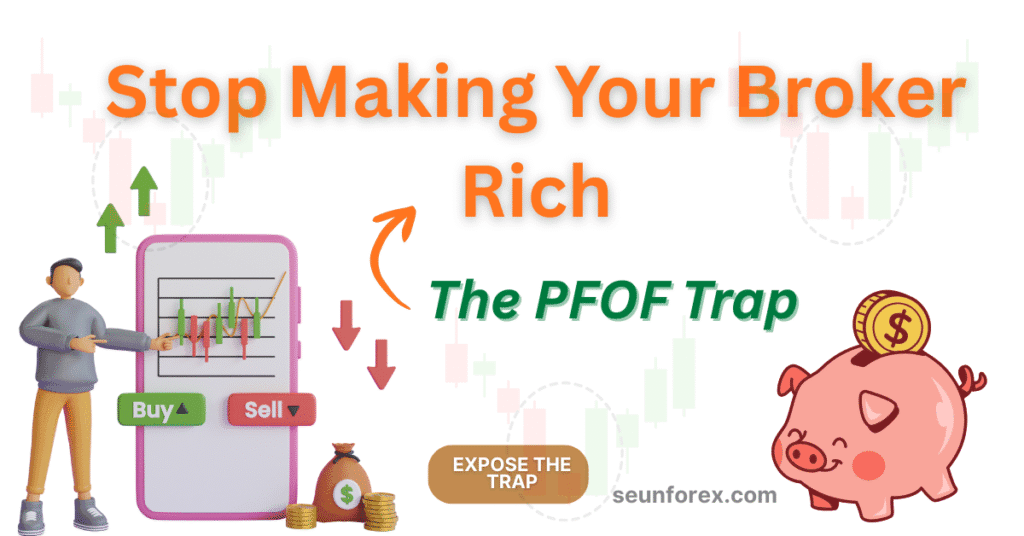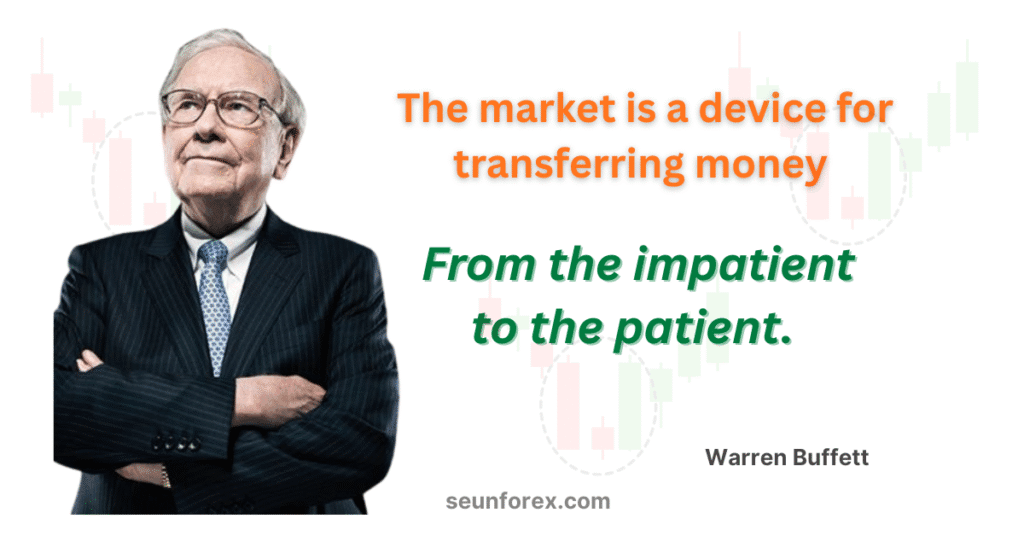
🕯️ The Hidden Cost of Overtrading
“The market is a mirror — but some mirrors are cracked.” — Anonymous Trader Wisdom
Broker conflict of interest is a hidden trap most traders never see coming. Imagine this: You open your trading platform, eyes wide with excitement. A stock spikes, a currency pair moves, and your adrenaline kicks in. You place another trade. And then another. By the end of the day, your account has shrunk. You can’t quite put your finger on it, but something feels… off.
What if I told you that the system itself might be stacked against you? That every extra trade you make isn’t just risking your money—it could be lining the pockets of your broker via PFOF or other incentives?
This is not a conspiracy theory; it’s the structural reality of many retail trading environments.
🧠 Why Trading Volume Can Amplify Broker Conflict of Interest
Most brokers fall into one of three categories, and understanding this is crucial to managing broker conflict of interest:
Market Makers (Dealing Desks)
They literally take the other side of your trade. If you lose, they profit. If you win, they might hedge or adjust internally. Overtrading and poor execution quality feed this conflict.
STP (Straight Through Processing) Brokers
Trades go directly to liquidity providers. Less conflict of interest, but execution quality and spreads still matter. Proper trading discipline ensures your strategy isn’t eroded by frequent trades.
ECN (Electronic Communication Network) Brokers
Advanced traders’ playground. Trades match other participants; brokers typically earn via commissions, not your losses. Combined with good trading discipline, ECNs reduce PFOF-related conflicts.
Key Insight: If your broker profits when you trade more, even subtly, your edge diminishes with every click of “Buy” or “Sell.”
🧱 The Psychology Trap
Human nature amplifies broker incentives. Consider these points:
- Overconfidence: You hit a few small wins. “I’m good at this,” you think. You trade more. Profits vanish.
- Revenge Trading: You lost yesterday. Now you chase the market. Overtrading increases. Brokers earn.
- FOMO: Fear of missing out drives impulsive trades. Every tick feels like opportunity—and risk.
“The first rule of trading: Don’t lose more than you can afford. The second: Don’t make the broker richer.”
⚔️ How Brokers Profit From Your Activity
It’s subtle:
- Spreads and Commissions: Every trade has an embedded cost. Frequent trades amplify losses even if your strategy is sound.
- Stop Loss Hunting Myth (and Reality): Many traders blame “market makers” for hitting stops. In reality, volume and liquidity are the culprits. Brokers don’t need to hunt—they earn from your frequency of trades.
- Incentive Alignment: Some brokers offer bonuses, rewards, or gamified platforms to encourage volume. More trades = more revenue for them, not you.
- Slippage and Requotes: Your entry isn’t always executed at the expected price. In fast markets, this can tilt small edges against retail traders consistently.
🔨 Real-World Example: The Overtrading Spiral
Meet Lisa, a novice forex trader.
- Day 1: $5,000 account, confident after studying her first candlestick patterns.
- Day 2: Makes 5 trades. Wins 3, loses 2. Adrenaline kicks in.
- Day 3: Overtrades 12 positions. Minor wins, bigger losses. Stress rises.
- Day 4: Emotional exhaustion. $1,200 gone.
Lisa didn’t pick the wrong currency pair. She picked the wrong trading rhythm. Every extra trade didn’t just risk her money—it fed her broker’s profits.
🌅 Lessons From the Pros on Broker Overtrading Risk
Veteran traders like Ed Seykota and Mark Minervini emphasize capital preservation over activity. Their edge isn’t in frequent trading—it’s in selective, high-probability setups that minimize broker overtrading risk.
Patience Over Impulse: Reduce Broker Overtrading Risk
Wait for confirmation. A trade isn’t valid until the market tells you so. This reduces unnecessary trades that could line the broker’s pockets.
Lower Frequency, Higher Quality Trades
Two trades a week can outperform twenty trades a day if each one has an edge. Fewer trades = lower exposure to broker overtrading risk.
Risk Per Trade Matters More Than Number of Trades
Protect the capital; the account will grow. Managing risk per trade directly counters broker overtrading risk while preserving account longevity.

🧭 Early Warning Signs Your Broker Encourages Overtrading
- Gamified interfaces with flashy alerts.
- “Trade now!” pop-ups or bonuses for deposits.
- Ultra-tight spreads that widen suddenly during volatility.
- Confusing fee structures where every trade carries hidden costs.
“Not all brokers are villains—but the system is designed for volume, not victory.”
💢 Actionable Tip: Measure Your Trade ROI
Instead of counting wins and losses:
- Track profit per trade vs. total fees.
- Monitor time spent per trade vs. account growth.
- If more trades = lower net gain, your broker is already winning.
🧘♂️ Psychological Armor Against Overtrading
- Daily Trade Cap: Limit the number of trades per day/week.
- Risk Percentage: Never risk more than 1–2% per trade.
- Journal Everything: Track setups, mistakes, emotional triggers.
- Focus on Edge: Only trade when all conditions of your strategy align.
“You can’t control the market, but you can control your activity.”
🔍 The Setup You Need
By now, the lesson is clear: if your broker’s revenue grows when your account shrinks, the first battle is controlling yourself. Understanding patterns, setups, and psychology only matters if you trade smart, not often.
🧱 Step 1: Choose Brokers Wisely to Minimize Broker Overtrading Risk
Not all brokers are created equal. Protecting your capital begins with aligning broker incentives to reduce broker overtrading risk.
Look for ECNs or STPs With Transparent Fees
- Commissions instead of spreads encourage brokers to stay neutral.
- Execution speed and liquidity transparency are key to limiting hidden costs and overtrading risk.
Avoid Brokers With “Gamified” Interfaces
- Pop-ups, flashy alerts, and aggressive bonuses often encourage volume, not smart trading.
- Gamified platforms increase broker overtrading risk by incentivizing frequent trades.
Check Slippage History and Trade Execution Quality
- Small delays and price gaps erode your edge and amplify overtrading risk.
- Use demo accounts to test execution before committing real capital.
Read the Fine Print
- Hidden fees, overnight swaps, and rollover costs add up when trading frequently.
- Your broker should reward discipline, not overtrading.
“Choose a broker who profits when you succeed—not when you lose.”
⚔️ Step 2: Build a Bulletproof Risk Management System
Traders who survive and thrive don’t just study markets—they protect their capital relentlessly.
- The 1–2% Rule: Never risk more than 1–2% of your account per trade. Even a losing streak won’t decimate your account.
- Stop Loss Discipline: Always define your risk before entering a trade. If your broker profits from your losses, your stop loss is your first line of defense.
- Position Sizing Mastery: Adjust trade size based on volatility, confidence, and correlation. Bigger risk = bigger potential broker gain.
- Daily/Weekly Loss Limits: Set a hard ceiling. Once reached, stop trading. Overtrading destroys accounts; a strict loss limit prevents that.
🌅 Step 3: Fight Psychological Traps
Overtrading isn’t just structural—it’s psychological. Here’s how to armor your mind:
- Fear of Missing Out (FOMO): Remind yourself: the market always offers another opportunity. Patience beats urgency.
- Revenge Trading: Losing a trade? Step back. Emotional reactions are your broker’s best friend.
- Overconfidence: Small wins can mislead you. Maintain humility and respect the market.
- Trade Journaling: Record setups, mistakes, and emotional triggers. Analyze weekly. Knowledge = discipline = profits.
“Discipline is your shield; patience is your sword.”
💢 Step 4: Spot Hidden Costs and Slippage
Even the best brokers can erode profits if you ignore execution details:
- Spreads widen during volatility: Know when your broker’s spread blows up during news events. Avoid trading blindly.
- Slippage: Execution at a worse price than expected can accumulate silently.
- Requotes: Frequent requotes on volatile pairs favor the broker. Track and avoid brokers with poor execution consistency.
- Swap/Overnight fees: Holding positions overnight can quietly drain accounts. Consider these in your strategy.
🔍 Step 5: Trade With High-Probability Setups
Your edge is not in the number of trades—it’s in quality. Combine technical clarity with psychological discipline:
- Candlestick + Indicators: Patterns like hammers, engulfing candles, and dojis gain power when combined with RSI, EMA, or support/resistance levels.
- Trend Confirmation: Avoid entering against the prevailing trend unless your setup has multi-layer confirmation.
- Volume Signals: High volume on reversals or breakouts signals real conviction, not random noise.
- Multiple Time Frame Analysis: Confirm patterns across higher timeframes to reduce false signals.
“The market rewards the patient, not the impulsive.”

🧭 Step 6: Case Study – How a Professional Trader Avoided the Trap
Meet David, a forex trader with $50,000. He initially fell into overtrading: dozens of trades per week, tiny wins, frequent losses, and a broker that benefited from volume.
- Broker Switch: Chose an ECN broker with transparent commission-based fees.
- Trade Cap: Limited himself to 3 high-probability trades per week.
- Risk Control: 1% per trade, strict stop losses.
- Journaling & Review: Documented setups, analyzed failures, tracked emotions.
Result: Within 6 months:
- Number of trades dropped by 80%.
- Profit per trade increased 300%.
- Account grew steadily while volatility in performance dropped.
David didn’t just survive; he reclaimed control of his account, his decisions, and his mind.
🧘♂️ Step 7: Use Technology Wisely
Automation and alerts can prevent impulsive overtrading:
- Conditional Orders: Set automatic stop loss and take profit levels to avoid emotional decisions.
- Limit Alerts: Only trade when your conditions are met. No “panic clicks.”
- Trading Journals & Analytics Tools: Track patterns, profit per trade, and fee impact.
“Technology can enforce discipline that human nature often fails to uphold.”
💡 Step 8: Advanced Edge – Align Strategy With Broker Incentives
- Trade higher-quality setups, less frequently. Brokers that profit from volume will naturally earn less from a disciplined trader.
- Avoid instruments with excessive spreads or swaps.
- Evaluate your broker quarterly. If your profits are consistently eroded despite a disciplined strategy, it may be time to switch.
🌅 Step 9: Mental Framework for Long-Term Success
- Focus on Compounding: Your aim is steady account growth, not instant gratification. Learn how compounding works and avoid common traps like payment for order flow — it can subtly impact your trade profits.
- Detach Ego from Results: Winning trades aren’t proof of skill; losing trades aren’t failure if risk is controlled. Explore strategies from self-taught traders in our Trading Guru Myth guide to see how real traders build consistent results.
- Prioritize Capital Preservation: You can’t make money with a depleted account.
- Continuous Learning: Markets evolve; so must your strategy.
“The best traders are not those who trade the most—they’re those who survive and thrive.”
✅ Key Takeaway
The ultimate lesson from understanding broker incentives, overtrading, and disciplined trading is this:
Protect your capital, trade selectively, and align your actions with strategy—not impulse.
- Brokers that profit from your frequent trades can silently erode your edge.
- Psychological traps like FOMO, revenge trading, and overconfidence feed unnecessary activity.
- Discipline, trade caps, journaling, and risk management are essential shields.
- Choose brokers whose incentives align with your success.
- Focus on high-probability setups, proper risk control, and patience rather than trade frequency.
- Every trade should be intentional; every decision should favor your account growth, not the broker’s.
“Trade less, think more, win consistently.” — Wall Street Trader Mantra
🕯️ Final Thought
If your broker benefits when you trade more, the first victory is control over yourself. The second is strategically using that control to trade smart. Overtrading is seductive, fast, and costly—but with discipline, clarity, and the right broker, you can reclaim your edge.